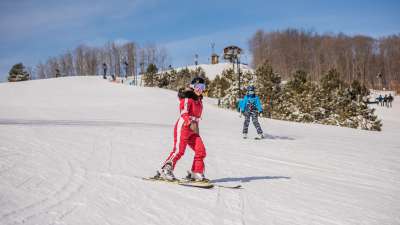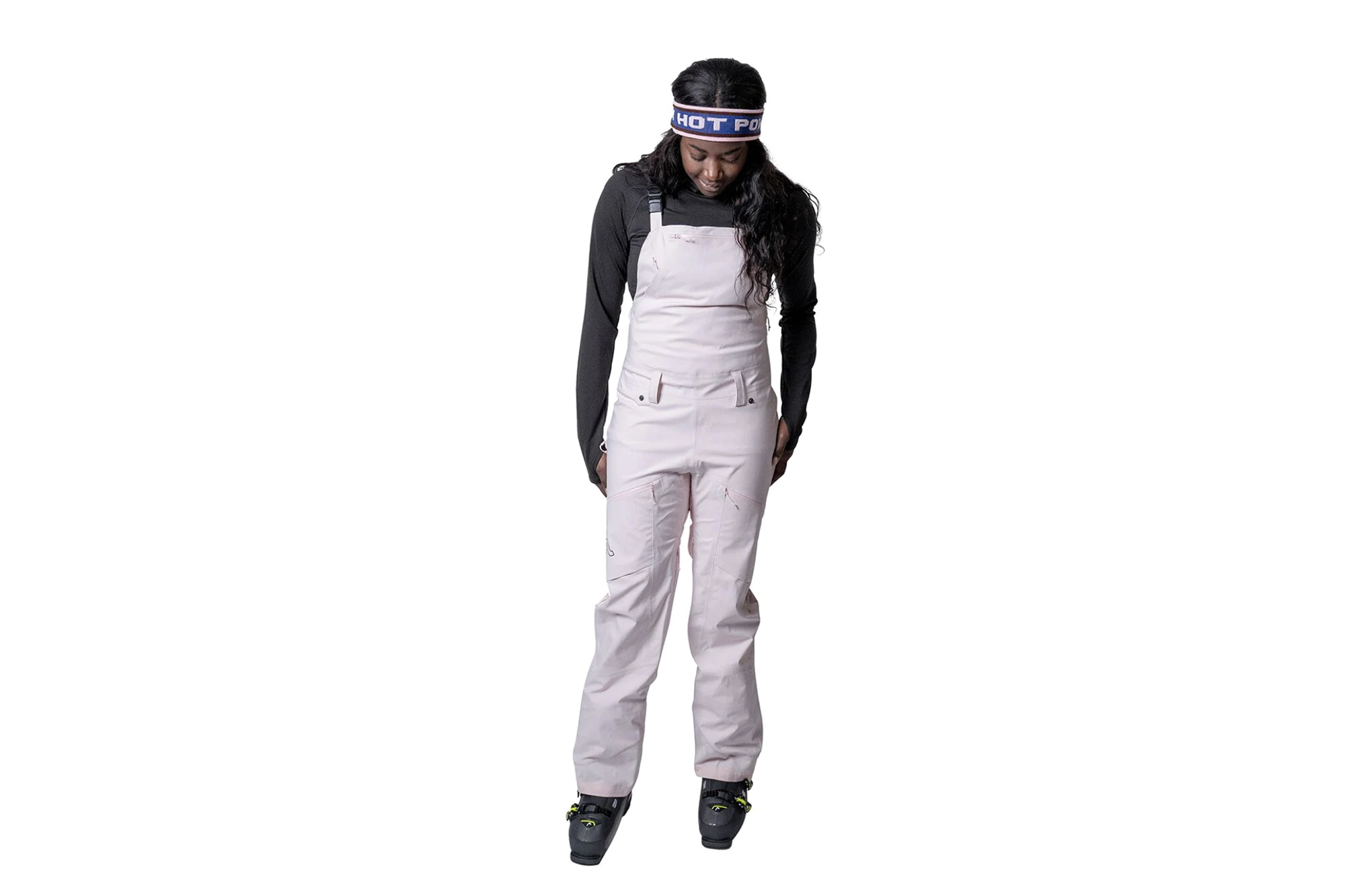
Skiing equipment is essential to a fun and safe time on the slopes. You'll need everything from basic clothing to safety equipment. If you're just starting out, investing in quality gear is worth it.
Cross Country Skiing Equipment
A cross-country set up includes a pair or skis as well as a vest, jacket or insulated jacket. Select a pair of skiing that suits your height and terrain. If you want to get the best power transmission, your skis should be made out of materials like composite, aluminium or carbon.
Poles
Poles will help you to make sharper turns and accelerate. If you need to stop quickly, they can help. But only buy them when you feel confident using them.
Goggles
Ski goggles are an important part of your ski equipment. You can use them to enhance your vision when fighting snow and glare. They usually come in various tints for different lighting situations. The lenses are excellent for protecting the eyes from small particles of snow and minimising reflections.

Boots
Ski boots are an essential piece of safety gear. They need to be adjusted for your weight, strength, and skiing type in order to make you feel comfortable. You can either buy them or rent them, but you should always have a professional adjust them for your best fit.
Bindings
Bindings, which are the straps holding your skis together need to be correctly shaped and sized to fit your body and feet. A pair of ski bindings that is too big can cause you to have your feet slide out as you ski. A pair too small may be uncomfortable or prevent you from skiing well.
A skier’s protective helmet is a vital piece of gear that protects your head against the impact of an accident or fall. A quality helmet that fits well and is comfortable can reduce the risk of head injuries by up to 56%*.
Adjust the helmets to your exact head size, height and weight. This will ensure that you get a good fit. You can try different helmets on until you find one that suits you.
Slope Safety
Ski patrol is a team of skiers who are responsible for ski slope safety, including clearing dangerous areas and marking any obstacles on/near the trail. These skiers are also trained on how to help or carry injured riders down the mountain safely.

The slopes are divided up into sections known as skier's right and left, and the fall line. These lines can be used to determine the direction downhill and are very useful for beginners.
Bunny Slope - this is a gentle beginner slope that is often used by ski schools. It's a great place to learn the basics.
FAQ
How much luggage should I take with me?
The length of your trip will determine how much luggage you need. Hand baggage is usually limited to 20 kg if you travel by plane. If you are traveling by plane, you only need hand baggage, usually less than 20kg.
A form will be provided to you when you arrive at the airport with information about your flight. This form will contain information about your flight, such as the weight and assistance required when you check them in.
You should always check this before leaving home. If you don’t, you may end up sitting around waiting while everyone else goes through their bags.
Because you never know what could happen, it is better to travel light. For instance, if your bag is lost or stolen, you won’t have any clothes.
What should I put in my luggage?
You should always have at least two pairs of shoes. You should have at least two pairs of shoes for your daily walks in the city, and one pair to take on vacation.
It is important to ensure you have enough clothes for both. For plane travel, make sure to bring extra socks, underwear, shirt, and pants.
You might consider bringing along some clothing if you plan to stay longer. This will make it easier to go shopping for new outfits and won't make you feel uncomfortable.
Comfortable shoes are essential for those who take the bus or train. And if you're driving, you'll need to ensure you've got a spare set of tires.
You'll also need to pack plenty of toiletries such as soap, shampoo, toothpaste, deodorant, and moisturizer.
Last but not least, make sure you have a flashlight, an insect repellent, sunscreen and sunglasses as well as a first aid kit.
It's better to keep all your items in one bag than to try to fit them in different bags. That way, you'll save time and space.
Don't forget to bring a towel and a washcloth. These will come in handy after a long day sightseeing.
What is the first thing to do after arriving at your travel destination?
You should always have an itinerary for when you arrive at a place. This helps you to know what to expect and where you should go next.
It is important to plan ahead so you don't forget anything.
For example, if you plan on visiting a city for more then one day, make sure you research which parks, museums, and landmarks are available.
A map of the area may be useful and you might want to read up on the history.
Do I need travel insurance?
If you plan to do something adventurous, travel insurance is crucial. In fact, you should make sure that you get cover for all types of adventure sports.
Skiers, for instance, should have adequate medical coverage. You should also look into getting coverage for things like theft, loss, and damage.
Cover for cancellation should be considered. This means that you can cancel your holiday without paying any penalties.
In addition, you should ask for cover for emergency evacuation. You can also be taken off the mountain in the event of an avalanche, or another natural disaster.
Which countries are known for their best food?
Different countries have different cuisines. So it's hard to say which countries have the best food.
But, we can still tell you where the best cuisine is!
TripAdvisor users ranked these three countries as the top three:
-
Italy - Italy has been voted number 1 by TripAdvisor users for its amazing food.
-
France - France came in second place because of its rich culture, cuisine and history.
-
Spain – Spain came third due to its wonderful weather and beautiful beaches.
Statistics
- Alcoholic beverages with more than 24% but not more than 70% alcohol are limited in checked bags to 5 liters (1.3 gallons) per passenger and must be in unopened retail packaging. (tsa.gov)
- Pack sweaters, jackets, and underwear in reusable compression bags creating up to 75% more space in your luggage. (wikihow.com)
- Case in point: the private island of Ilha Caldeira, less than seven miles off the coast as part of the Primeiras and Segundas Archipelago, is located within the marine-protected area with 20 percent of the country's intact living coral. (travelandleisure.com)
- According to Maori legends, this park holds 14 fjords that were all carved by a giant stonemason with an adze. (busytourist.com)
- They're also likely to offer babysitting services, in case you'd like to have dinner one night after 7 p.m. (travelandleisure.com)
External Links
How To
Are there websites that offer airline tickets at a fraction of the cost?
Yes, there are lots of sites that sell airline tickets cheaper.
However, not all of them are reliable and safe, so always check the reviews first.
Here are just some of the places where you can get cheap flights:
-
Cheapflights.com
-
Skyscanner.net
-
Momondo.com
-
Kayak.com
-
Google Flights
-
Hipmunk.com
-
Expedia.com
-
Orbitz.com
-
Priceline.com
-
Hotwire.com
-
Travelocity.com
-
Cheapoair.com
-
CheapAir.ca
-
CheapOair.com
-
CheapTickets.co.uk
-
LastMinute.com
-
CheapTrip.com
-
CheapRentals.com
-
HotelDiscounts.com
-
Agoda.com
-
Booking.com
-
Trivago.com
-
Cheaptickets.com
-
Travellink.com
-
Momondo.com (for flights only)